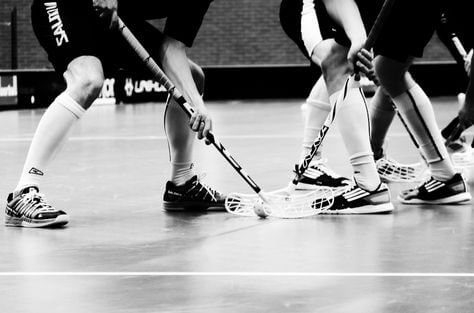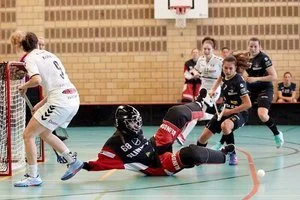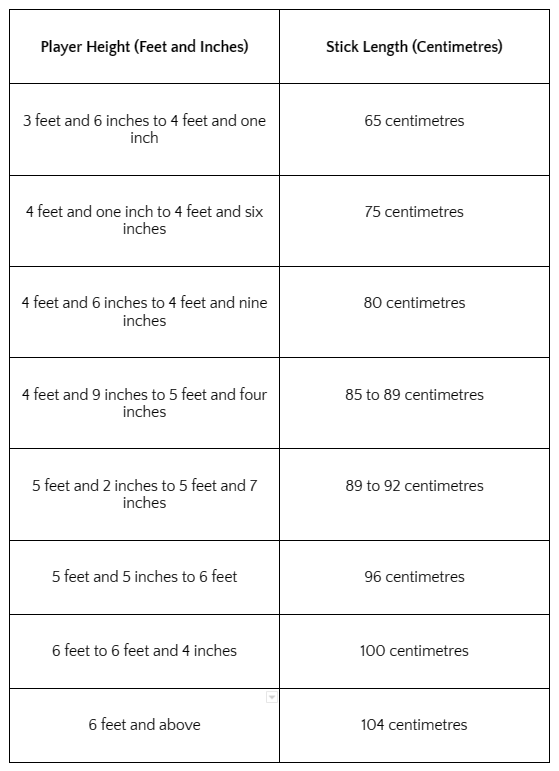What is Floorball? An Essential Guide
Everything You Need to Know About Floorball
Floorball is a stamina-driven and fast-paced stick and ball sport enjoyed by people of all ages, particularly young individuals.
It is fun, inclusive, safe and easy to learn. Unlike ice hockey, opposing players don’t contact with force and they focus on ball control and passing, making floorball a safe sport.
Research shows that floorball first originated in Sweden in the mid-1970s. Today, it is the fastest-growing sport in Europe, with keen interest from young people.
Most people believe that floorball comes from sports such as hockey, football and basketball.
That's why you can see different concepts, strategies and tactics in floorball from these other sports.
The International Floorball Federation (IFF) governs the sport and makes critical decisions.
According to NTFA, floorball has over 270,000 licensed players in 52 member countries.
NTFA reports an estimated 1 million floorball players worldwide. The World Championship takes place in even years for men, and odd years for women.
The IFF has also launched the under-19 championships for male and female teams.
This article will discuss floorball's benefits, rules, equipment and other essential details. Read on to find out more!
So What is Floorball?
Floorball is easy to learn and play. It does not require you to make substantial investments or purchase high-end equipment.
You can even start playing floorball with just shoes and a stick!
You don't need previous experience to play the game, as you can develop floorball skills efficiently and quickly.
As the game's pace increases, you will find it thrilling and challenging. That's why focusing on ball handling, passing and shooting skills is crucial.
Floorball becomes even more complex and physically demanding when it involves tactical gameplay.
You don't need months or years to master the sport. However, regular practice is essential to become a professional floorball player.
Men, women, boys and girls can easily play floorball to improve their physical and mental well-being.
Although it is good to focus on improving your speed, the important thing is control, tactics, passing and shooting, as the ball moves fast.
You can play floorball almost anywhere, including ice, snow and even the beach.
Who can play Floorball?
As floorball is physically demanding, players must have optimal stamina levels to streamline their gameplay.
A floorball player usually takes various short spurts in different directions.
This sport helps to improve your athletic, speed, reaction and elasticity skills.
Keep in mind that floorball is all about hand-eye coordination and stick-handling abilities.
The training involves technical, tactical and muscular fitness, including running, speed and coordination.
To play as a goalkeeper, you must have exceptional reflexes and anticipation, much like goalies in Fotball or Ice Hockey. Like with any sport, the more you practice, the more you learn, and the more you play floorball efficiently!
What are the specifications of a Floorball court?
Although you can play floorball almost anywhere, the IFF requires teams to play indoors. A floorball court consists of various materials, such as plastic or wood matting surfaces.
The standard dimensions for the court are 40 metres long and 20 metres wide, or 131 feet x 65 feet in length and width.
A rink or boards surround the field, and these are at least 20 inches or 50 centimetres in height. The international standard requires "round" rink corners.
The rink size varies depending on youth and adult gameplay.
However, the general rule is that the length must be 2 times the width. The goal size is 160 centimetres wide, 115 centimetres high and 60 centimetres deep.
How to choose Floorball sticks
It is important to consider a few factors when choosing a floorball stick, such as the material, ergonomics, control, length and more.
Floorball sticks are made from different materials, such as carbon fibre or fibreglass.
The choice of floorball material depends on your personal preferences. It helps to choose a lightweight stick with a rounded grip. When it comes to length, ensure it is between 80 and 100 centimetres.
Remember, these factors are critical to maintaining manoeuvrability and gaining more control.
If you’re a beginner, choose a flexible shaft of 32 to 36 millimetres to gain more control of the ball.
On the other hand, we recommend going for a durable shaft to play powerful shots and increase your chances of scoring a goal.
Choose a stick with curvy blades to achieve both right-handed and left-handed shots. Look for a stick with a maximum of 3-centimetre hook.
The shaft's length is critical when choosing a stick, as it impacts your learning skills and gameplay safety. You need to consider your height, as it directly relates to the shaft's length.
You can put the stick vertically in front of yourself to measure the length/height.
For example, a child who wants to play floorball must have a stick that reaches their sternum. In comparison, adults must choose a stick that reaches their belly button.
Below, find a table with the correct stick length for individual height measurements:
Player height and floorball stick length measurement table
What are the basic rules of floorball?
Floorball rules come from various other sports, such as football, hockey and basketball.
These rules from other sports help to create an innovative and unique sport. Although floorball closely resembles floor hockey, the rules are pretty different.
So, it’s important to follow floorball rules to streamline gameplay.
The game's primary objective is to hit the ball with a stick and score a goal. Each goal equals 1 point.
According to the IFF, an official floorball game consists of 3 halves or periods. Each half is 20 minutes long, with a 10-minute break between each period.
The team that scores the most points wins the game after 60 minutes of gameplay comes to an end. Each team consists of 5 field players and a goalkeeper.
The general formation of players is 1 goalie, 2 defensemen, 1 centre and 2 forwards. You can't hit, block, kick or lift an opponent's stick, otherwise the official will penalise you.
Pushing, tackling and obstructing the opponent can also result in a foul.
Moreover, you can't play the ball with the stick above knee level.
Jumping up and stopping the ball is prohibited when playing floorball, and you can't raise the blade above your waist when hitting the ball.
Face-Off Rules
The official will place the ball on the centre face-off dot.
Players on each team remain on their side and at least 3 metres from the face-off dot.
No more than 2 players can take the face-off, and they must place their feet 90 degrees or perpendicular to the centre line.
In addition, keep your feet at the same distance from the court's centre line.
Place the blade perpendicular to the centre line without touching the ball.
Hold the stick with a normal grip, with your thumbs pointing downward. Keep your hands above the stick's grip mark.
Hit-Ins and Free Hits Rules
Hit-ins and free hits have unique rules in floorball.
Different situations during the play can lead to hit-ins and free hits. Although hit-ins and free hits share similar characteristics, they are different.
It’s important to understand the differences to optimise gameplay.
For example, an official will give a hit-in to the defensive team if the ball leaves the floorball rink after a member of the offensive team touched it.
On the other hand, the referee or official will award a free hit to the offending or defending team, depending on which team fouls.
A free hit is an excellent opportunity for offending teams to score a goal.
However, this occurs when the defending team's player fouls.
Penalties
Sometimes, violating the rules on the field forces the official to punish players.
When you break a major rule, the official may penalise you and order you to sit out of the game for a specific duration.
Stick-checking, body-checking, slashing, tripping and high-sticking usually result in penalties.
Have you played Floorball or are you willing to give it a go?
Floorball is a beautiful sport, first developed in Sweden in the 1970s, and we all know how cool the Swedes are.
Since then, it has slowly and steadily occupied a place in other countries and now it needs YOU to help continue spreading the word.
The fast-paced nature of the game, high drama and enthusiasm make floorball an exciting sport for players and spectators alike., so why not give it a go!



